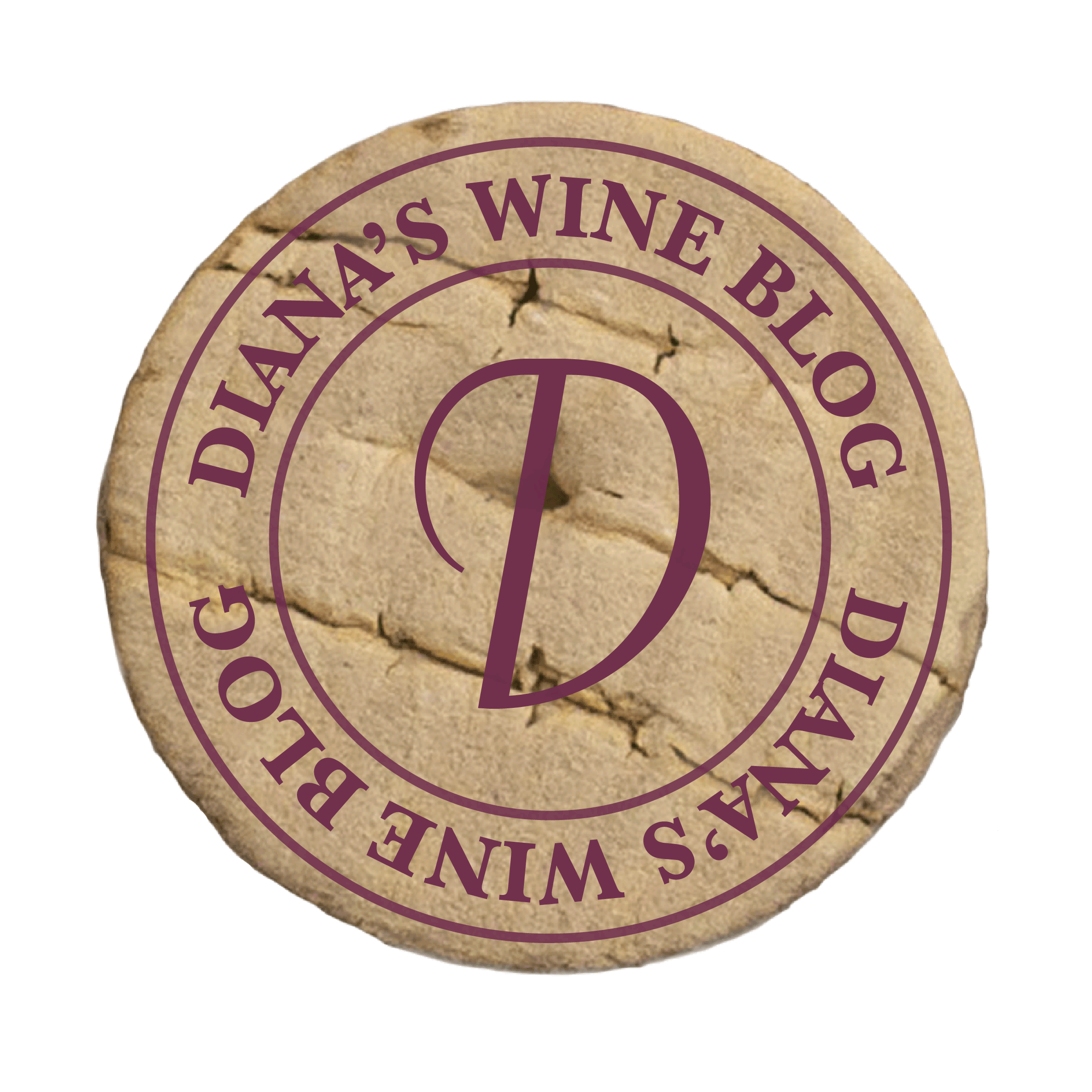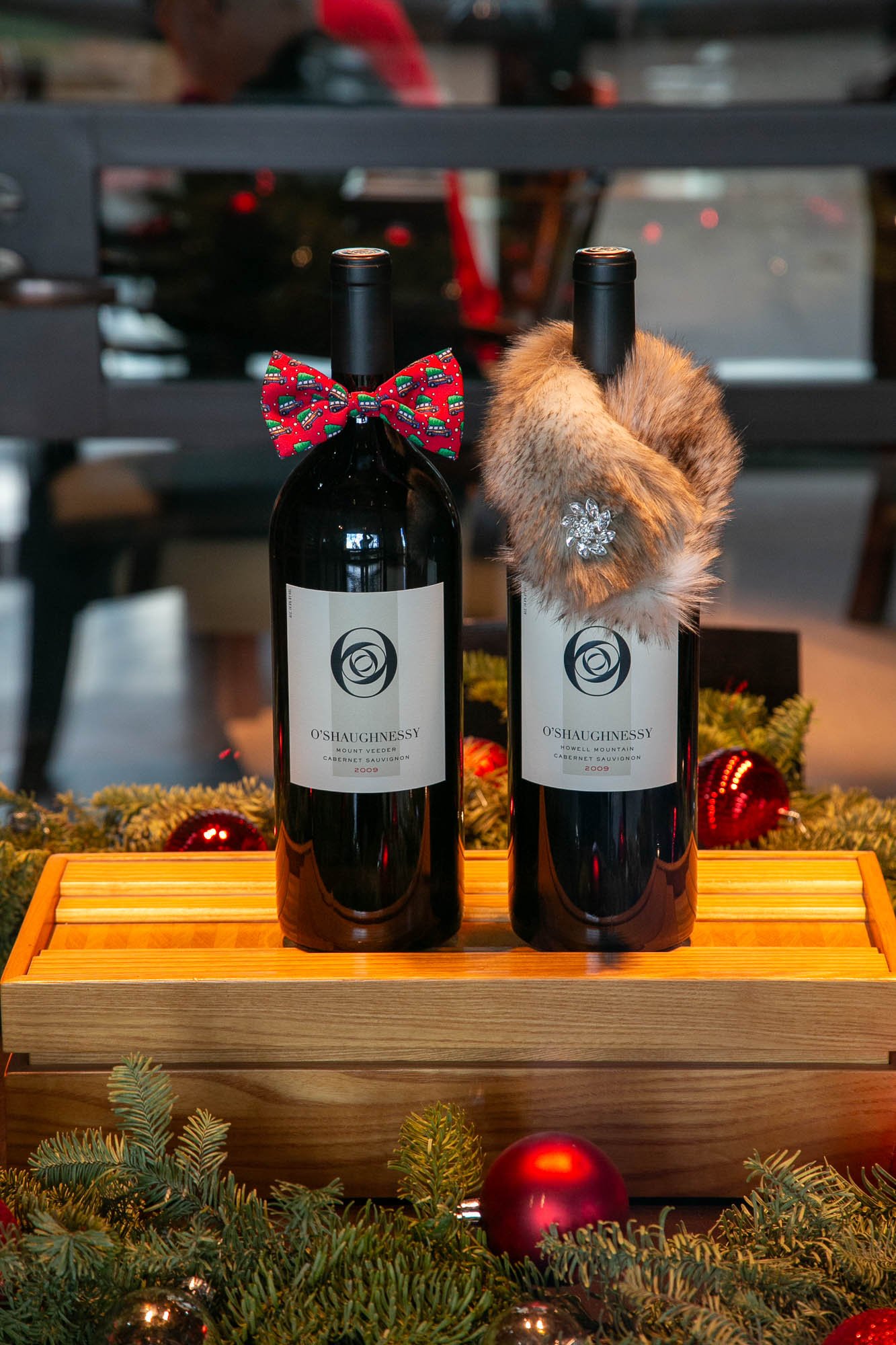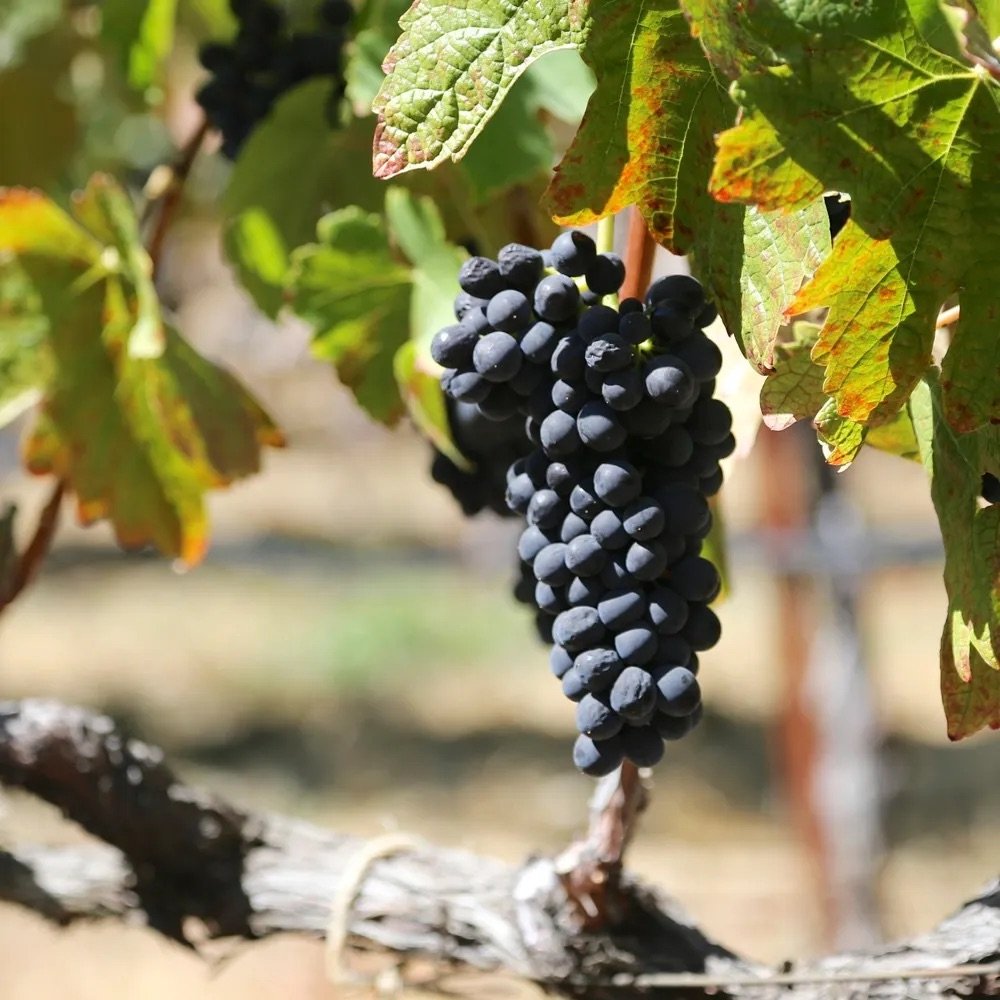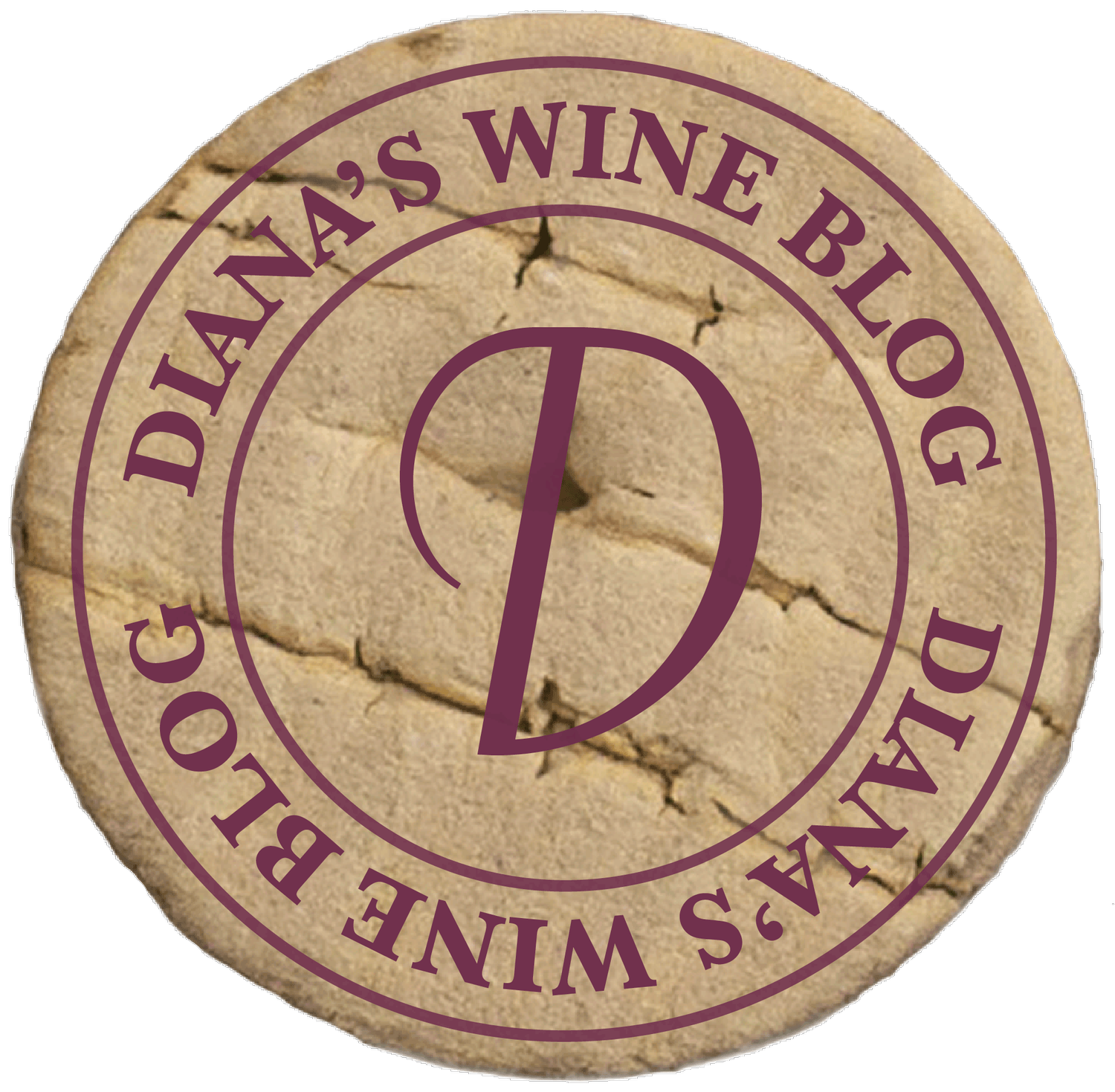
$9.99, Really??
Many times people ask me what my favorite wine is. My thoughtful response: “It comes in a bottle.” I have grown to appreciate many different varietals and blends. I credit this to the fine art of wine making. There is much to explore and appreciate in any well-crafted wine. This is not a shot at box wines – some are actually well done and can provide good values. (We can talk about that in a later blog – maybe.) Yet my preference runs to those that come bottled.
One varietal for me that fits many dinner menus of light fare is Grenache. It’s not as well known as a stand-alone wine, although many wine makers will use it in a blend; and it’s the heart of Chateauneuf-du-Pape. For me, Grenache is more textured and has more tannic structure than Pinot Noir, and I like it all by itself. Many times, a young Grenache is full of strawberry and raspberry flavors with some dusty undertones.
Let me share a story….

A Visit to Howell Mountain: O’Shaughnessy Winery
With Christmas day, lovingly celebrated with family, in the rear view mirror, it was time for a quick visit to Napa Valley. This is a time of the year that is relatively quiet in the valley with many wineries closed for a break until after the New Year. I needed to pick up some wine at O’Shaughnessy Winery, so we headed up Howell Mountain. O’Shaughnessy is one of my favorite wineries on Howell Mountain, and Howell Mountain itself is a specific appellation and one of the AVAs of the valley.
More about O’Shaughnessy in a minute, but let’s talk about the terms “AVA” and “appellation.” AVA stands for an American Viticultural Area. Specifically, an AVA is an officially recognized appellation; and an appellation is defined as a “geographically based growing region that shows unique characteristics of soil, climate, historical relevance and more.” Throughout Napa Valley, there are several AVAs, and Howell Mountain is one. An AVA’s distinctions influence the grapes and, ultimately, the wine. What distinguishes Howell Mountain is a climate that is slightly warmer and drier overall due to strong afternoon sun influence. The elevation ranges from 600 feet to 2600 feet, and the principal varieties grown are Cabernet Sauvignon, Merlot, Zinfandel and Cabernet Franc. It’s a short 20-minute drive up Deer Park Road (from Silverado Trail) to Howell Mountain.

Happy Holidays!
Happy holidays to everyone! This is such a great time of year to enjoy spending time with family, friends, and loved ones. It’s also a great time to enjoy wonderful food and interesting wine.
If you like, hit “reply” below and share with everyone what wine you’re enjoying this holiday season.

Call Me a “Cab”!!!
Cabernet Sauvignon has been referred to as the King of red wine grapes and the varietal of preference for many. Cabernet Sauvignon and blends where the Cabernet Sauvignon grape predominates are some of the most prized wines produced in California. Cabernet Sauvignon (often referred to as “cab” or “cabernet”) is dry, full flavored, and made to be long-lived. The aging potential can be 10-20 years or more. Yet, do you know where the varietal comes from? Interestingly, it is a relatively new varietal – the product of a crossing between Cabernet franc and Sauvignon blanc during the 17th century in France. Since that time, Cabernet has traveled all around the world and is the dominant grape grown in Napa Valley.
Let’s talk about what it is that has that beautiful, full-bodied wine be designated a Cabernet. In order for a wine to be called a Cabernet, 75% must come from Cabernet Sauvignon grapes. The wine maker may then blend in other grape varieties to produce the best possible outcome. Depending on the vintage and the yield (plus many other factors), he or she may add Merlot, Cab franc, Syrah, Mouvedre, or other grapes to round out the flavor profile. The 75% rule is true for all wines in the United States: In order to be called a specific variety, 75% must come from that variety. If it’s less than 75%, the wine needs to be called a blend.

A Word about Ratings
It seems today that everything is rated, in one way or another: movies, restaurants, Olympic dives, and so on. Wines are rated as well, and it can be confusing. You may wander through the store and see ratings by Wine Enthusiast, Wine Advocate, and/or Wine Spectator. Or maybe you’ll see Wilford Fong or Gold Medal Winner. The list seems almost limitless.
The first question to ask is why? What do the ratings matter? I like what I like, right? Well, yes and no. Wine is an artful expression of fruit that has been transformed into a delightful beverage that we enjoy. It is also a balance of fruit, alcohol, and tannins (if we’re talking about red wine). (Tannins are found in the skins and seeds of grapes, and their presence gives you the feeling of dryness in your mouth.) If there’s too much of one, the wine will not be pleasurable. If there’s too much alcohol, the wine will feel hot and overpowering. If there’s too much fruit, without the alcohol and tannins, the wine will be flat or flabby. If the tannins aren’t fully ripe, the wine will be harsh and almost astringent.
So what does this have to do with ratings? Well, that is the value, in my opinion, of the ratings. Ratings give you confidence that you’re buying a well-crafted wine, one that most likely has a good balance of fruit, alcohol, and tannins. The first step to enjoying wine is to have a well-structured, well-balanced wine.

A “FEW” Things about Exploring Your Wine
This week, let’s talk more about how to explore what’s in your glass. After all, isn’t that what it’s all about?
There’s more in the glass than just fruit. While the prime component is grapes, part of the fascination of wine is discovering what other aromas, flavors, and nuances are expressed in the wine. Different varietals have characteristic flavors and aromas – yet not always. There are many factors that affect the flavors and aromas that are represented in the glass, including water, sun, wind, soil type, and even plants that grow in the region. For example, Shiraz from Barossa Valley (in Australia) has a slight mint aroma that is brought out by the eucalyptus trees that are indigenous to the area. These are intriguing factors, and the fun is to discover what is there, to really explore.
Let me share a process that will assist you in becoming more aware of what’s in your glass. Practice and allow yourself to discover along the way. Don’t feel any pressure to “get it right.”

Being “Nosey”
Let’s talk some more about the nose to glass. There was a time that our sense of smell was primarily for protection. But, today, the sense of smell for humans is one of the primary senses of pleasure. In fact, many of the things we taste are a function of what we smell. We can discern, in varying degrees, thousands of scents. It stands to reason that the beauty (or not) of a wine begins with the scent (termed “the nose”) of what is in the glass. Given the nuances we can discern, it makes sense that we give ourselves the greatest opportunity to explore what is in the glass through our nose.
There are many subtle aromatics, so the first thing to do is to sniff. Then swirl (to liberate those aromas) and sniff again. Let yourself identify what you smell. Since we can only discern one aroma at a time, sniff, then identify, then push that aside mentally and sniff again. What is that next aroma? Really allow yourself to investigate.

“Desperate” for Crystal
I will admit it – I was a big fan of Desperate Housewives. Bree, while not my favorite, was always very sophisticated and well-heeled – until the night she was going to take her life in a hotel room. She set the stage with fine linens, her best nightgown, her favorite chardonnay. Then, she proceeded to pour the chardonnay into a plastic disposable cup. UGHHH!!
Fortunately, Bree’s suicide attempt was interrupted, but let’s talk about why the glass matters. Wine can be drunk from any type of vessel, yet the result will not be the same. As I mentioned last week, what we experience with wine is about 75% driven by what we smell. The source of the aromas is the volatized esters in wine. Those are the floral, blackberry, and strawberry aromas (just to mention a few). We can discern only five distinct flavors on our tongue: sweet, sour, salt, bitter, and umami (a Japanese word that translates to meaty or savory). However, we can distinguish thousands of odors.

Welcome to Diana’s Wine Blog!
I’m excited to finally be putting into print what I’ve been talking about for a long time. The intent here is to educate, inform, and engage in a conversation about wine. Quality is the pursuit, and it need not always be expensive. There are great wines that are relatively inexpensive, but the challenge is in knowing what to look for and where to find it.
To begin, we need the tools to understand our own preferences and expand from there. The joy of wine is the exploration, and together we have that opportunity – not only to explore what the single glass has to offer, but also different varietals and different countries. There is a big, wide world out there; and it is ours to explore.
